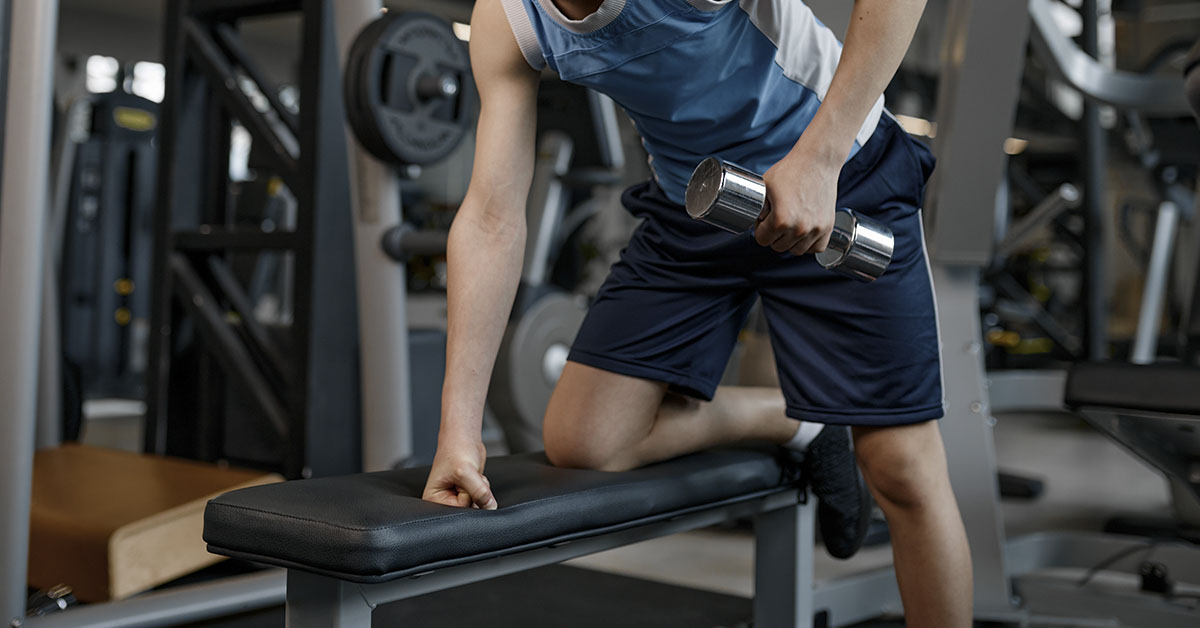In the world of fitness, symmetry is usually the goal. But a 19-year-old, nicknamed “The Crooked Man,” decided to train only the left side of his body for 198 days. The result? A shockingly uneven physique that went viral online. His left shoulder, arm, and trapezius muscles grew dramatically larger than the right side. This unusual transformation quickly caught the attention of millions on Instagram and TikTok.
The teen’s reason for this experiment was not just curiosity, but a way to challenge social media’s obsession with perfect appearances. He joked about “looksminimizing,” the opposite of “looksmaxxing,” a trend where people try extreme methods to improve their looks. His goal was to make people think about beauty standards and self-expression in fitness. Some found his results funny, others called it an art form. But no matter the opinion, his dedication to training one side every day was impressive and consistent.
How Muscles Work: The Basics of Growth and Strength
To understand this transformation, it’s important to know how muscles develop. Muscle growth, or hypertrophy, happens when muscle fibers experience stress or tiny damage through exercise, like lifting weights. The body repairs these fibers, making them thicker and stronger over time.
Usually, people train both sides of their body evenly, which helps maintain balance and prevents injuries. However, when you focus on just one side, that side grows larger and stronger, while the other side stays the same or even weaker. This is exactly what happened to the teen. He worked his left side hard every day, pushing those muscles to grow while the right side was left alone.

Though muscle size increases mostly on the trained side, there is a neural effect called “cross-education.” This means that when someone trains one side of body more than the other, it can sometimes improve strength on the opposite side through brain and nerve adaptations, but the size change is usually minimal.
The Science of Hypertrophy: What Really Happens in Your Muscles
Muscle growth involves two main factors: mechanical tension and metabolic stress. Mechanical tension is the force muscles feel during weight lifting or resistance exercises. Metabolic stress happens when muscles are under strain for longer periods, leading to that familiar “burning” feeling.
These two work together to cause muscle fibers to break down at a microscopic level. After training, the body repairs these fibers, making them bigger and stronger. Nutrition also plays a big role in this process. Without enough protein, calories, and rest, muscles can’t repair properly.
In the teen’s case, his daily targeted exercises on one side created significant mechanical tension and metabolic stress for those muscles. Over 182 days, this led to noticeable growth only on his left side. Experts warn that this kind of unbalanced training, if not done carefully, can create problems in posture and joint health over time.
Read More: 15 Habits to Help You Lose Weight While You Sleep
Risks of Training One Side Only: What Could Go Wrong?
Training only one side of your body might seem like a fun experiment, but it carries real risks. The human body is built to move symmetrically. When one side becomes much stronger or larger than the other, it can cause muscle imbalances. These imbalances often lead to poor posture, pain, and even injury.
For example, overdeveloping one shoulder can strain the rotator cuff muscles and cause shoulder pain. Imbalanced back muscles can lead to spinal misalignment, which may result in chronic discomfort or limited movement. Even daily activities like walking, sitting, or lifting can be affected when the body compensates for uneven strength.

The teen has reported feeling fine so far, but physiotherapists and sports doctors generally advise against maintaining such imbalances for long periods. After finishing his experiment, he will likely need to perform corrective exercises to restore balance and prevent long-term damage.
How Daily Habits Influence Muscle Balance
Most people don’t realize how daily routines influence muscle development. For example, carrying a heavy bag on the same shoulder every day can lead to uneven muscle growth and posture problems. Sitting with poor posture or always leaning on one leg also affects muscle balance.
Over time, these small habits add up. Sedentary lifestyles and desk jobs often cause weak core and glute muscles, tight hip flexors, and rounded shoulders. Regularly changing posture, stretching, and being mindful of how you carry weight can help prevent these imbalances.
Even simple adjustments like switching which side you carry your bag or standing up and moving frequently during the workday can make a big difference in muscle health and posture.
Expert Opinions on Asymmetrical Training and Body Adaptation
Experts find the teen’s transformation fascinating but caution against imitating it without guidance. Healthline reports, “Muscle imbalances can also result in instability. This can lead to an increased risk of injury, including damage to joints.”
While short-term experiments may not cause major harm, long-term uneven training risks causing injuries and pain. Most doctors would recommend returning to balanced training after such an experiment and suggest working with a professional if you notice pain or posture issues.
How Small Changes in Your Daily Routine Can Improve Your Body
Improving your muscle balance doesn’t require hours at the gym. Small daily changes can make a big difference. Simple habits like taking stairs instead of elevators, walking during breaks, and stretching regularly help keep muscles active and balanced.
If you work at a desk, standing desks or regular standing breaks can reduce stiffness and improve posture. Even short bursts of exercise, like 10 minutes of body weight workouts or yoga, can strengthen neglected muscles.

Mindful movement, paying attention to how you sit, stand, or carry objects, can prevent imbalances before they start. Being consistent with these small changes adds up to healthier muscles and joints.
Tips for Adding Workouts into Your Busy Day
Finding time to exercise can be challenging, especially with school, work, and social commitments. Here are some practical tips:
- Start Small: Begin with short, simple exercises like squats, push-ups, or planks. Even 5-10 minutes counts.
- Use Technology: Fitness apps offer quick workouts you can do anywhere. Try 7 Minute Workout or FitOn.
- Combine Activities: Listen to podcasts or music while exercising to make it more enjoyable.
- Set Realistic Goals: Focus on consistency, not intensity. Small, daily steps lead to long-term success.
- Make It Social: Workout with friends or family to stay motivated.
- Move More: Take stairs, walk during phone calls, or stretch during TV breaks.
These tips can help even the busiest people improve fitness and muscle balance gradually.
Embracing Your Unique Fitness Journey
The story of “The Crooked Man” shows that fitness doesn’t have to follow a strict path. While his approach isn’t recommended for everyone, it highlights the importance of personal expression and questioning norms. Fitness is not just about looking a certain way but feeling strong, confident, and healthy.
Everyone’s body responds differently to exercise. Some may prefer balanced workouts, while others experiment with unique methods. The key is to listen to your body, seek guidance when needed, and find joy in movement.
Whether you want symmetrical strength or a quirky story to tell, fitness is about what makes you feel your best.
Read More: Expert Claims That Failing This Basic Test at Home Could Lead to Early Death

